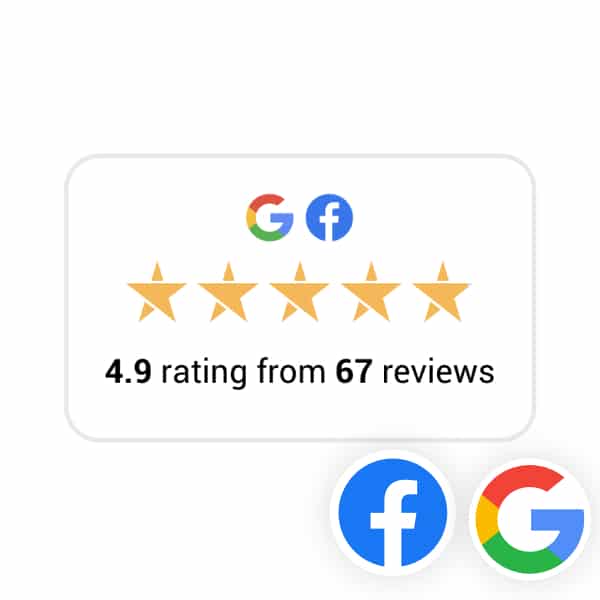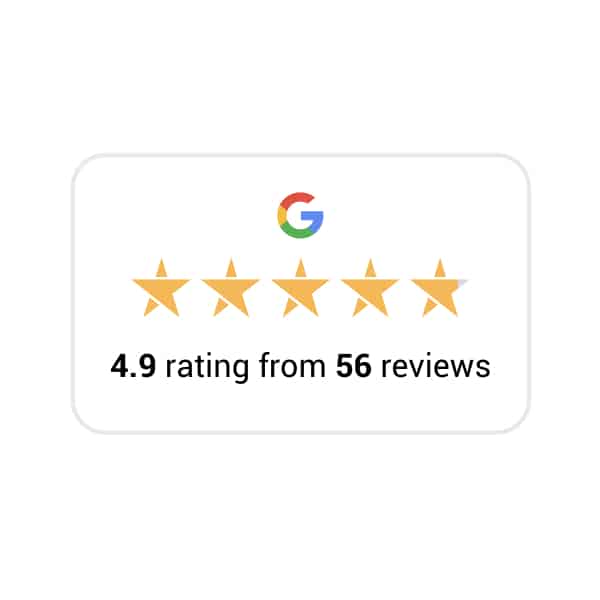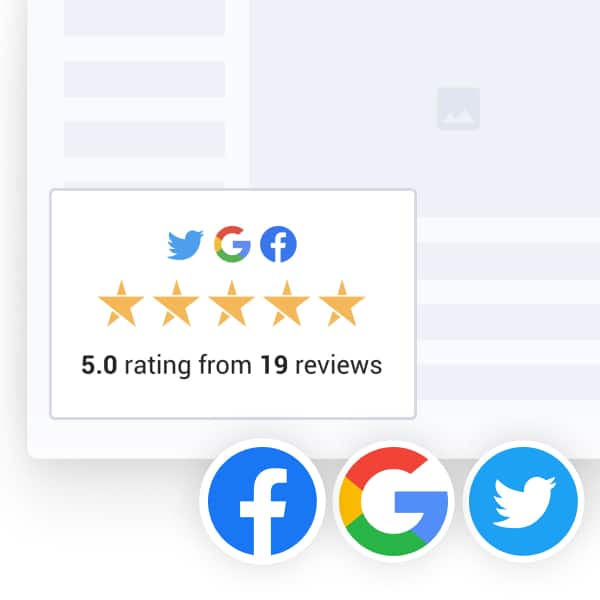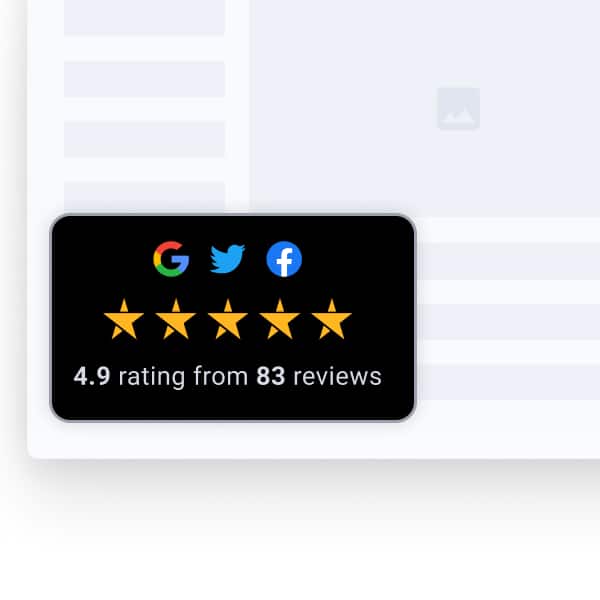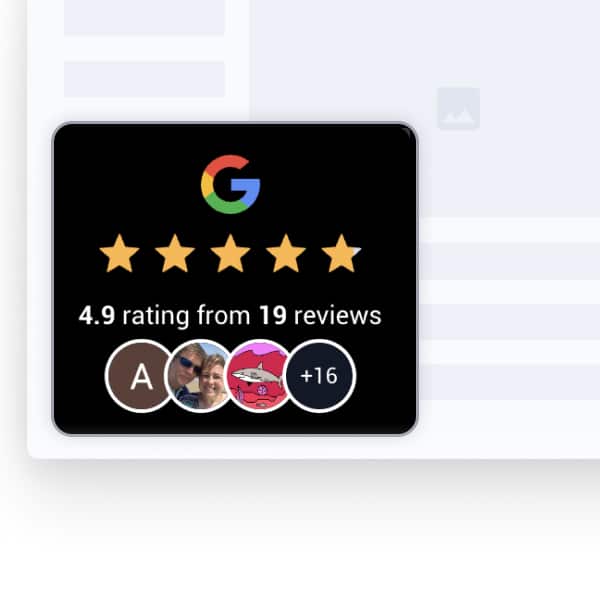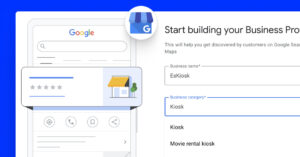A curse or a blessing? Reviews have the power to either make or break your business.
It’s time to start thinking about how you can manage reviews and get ahead of any issues before they arise.
We’ve put together this 5-step guide that will help you keep control of your reviews and your business.

Embed a PRO Google Reviews Widget
Automatically collect and embed Google reviews and use AI reviews management tools to unlock your website’s sales potential.
FYI: You can automatically embed Google reviews widget on your website and show authentic user-generated reviews, increasing trust for more sales. Try it now.
What’s online review management?
Online review management (also known as online reputation management) is the process of collecting, generating, responding, and managing the customer reviews businesses have across the review platforms.
Developing a review management strategy is crucial for local businesses to establish an online presence and keep customer satisfaction on a great level.
87% of consumers read reviews online for local businesses before they decide to make a purchase, which is a serious number that should pull the trigger for you.
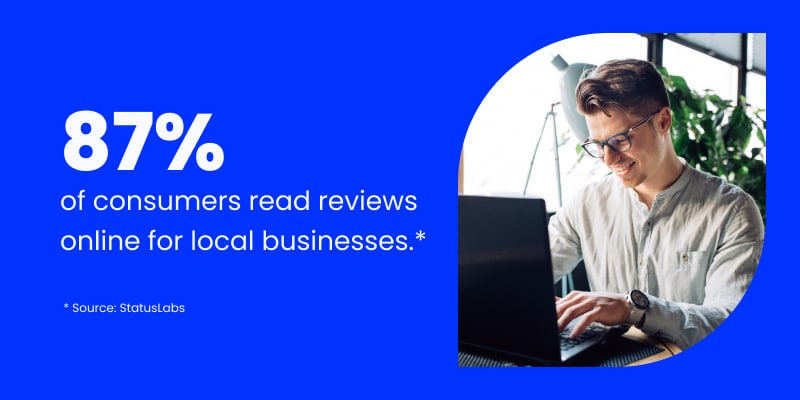
Learn more: What is a review aggregator?
Benefits of online review management
Having an online review management system is a crucial aspect of digital marketing and customer relations. Here are some key benefits:
- Enhanced Reputation and Trust: Actively managing online reviews boosts consumer trust by showing commitment to customer satisfaction, positively impacting the business’s reputation.
- Improved Visibility and SEO: Managing reviews can lead to higher search rankings, as search engines favor businesses with numerous quality reviews, enhancing online visibility.
- Valuable Customer Insights: Online reviews provide crucial customer feedback, helping businesses understand customer preferences and improve products and services.
- Increased Customer Engagement and Loyalty: Responding to reviews builds customer relationships, fostering loyalty and encouraging repeat business.
- Conflict Resolution and Service Recovery: Addressing negative reviews promptly can resolve issues and improve customer satisfaction, showcasing the business’s dedication to excellent service.
Review Management vs. Reputation Management
Review Management and Reputation Management, while related to the realm of digital marketing and customer relationships, focus on distinct areas. Review Management specifically handles customer reviews on platforms like Google, Yelp, or Amazon.
This involves monitoring these reviews, responding to them, and encouraging positive customer feedback, with the primary aim of enhancing both the quality and quantity of these reviews. These efforts directly impact how potential customers perceive a brand and can improve search engine rankings.
On the other hand, Reputation Management has a broader scope, encompassing the overall public image of a brand or individual across the internet. While it includes managing online reviews, it also extends to social media presence, content creation, public relations, and addressing any online content or media that might influence public perception.
The objective here is to manage business reviews and proactively shape and maintain a positive brand image, manage public sentiment, and mitigate negative publicity across all online platforms.
Therefore, while review management is a key part of reputation management, the latter represents a wider set of strategies aimed at preserving and enhancing a brand or individual’s image in the digital landscape as a whole.
The 5 stages of review management
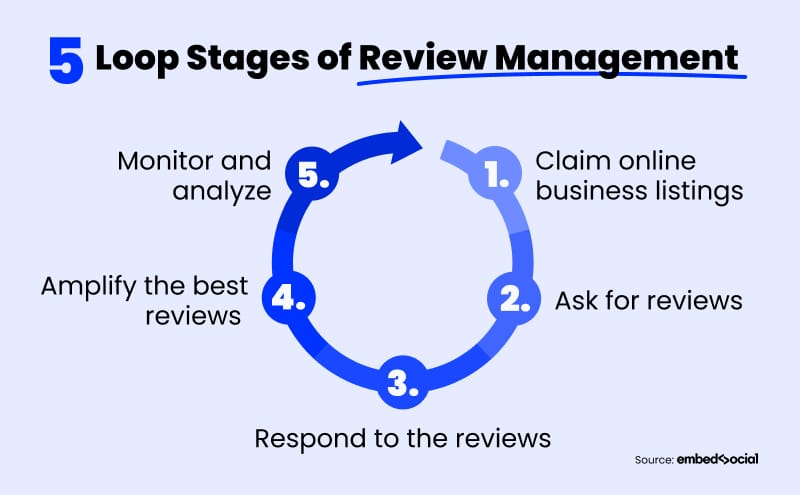
1. Claim online business listings
The first step in the process is to claim your listings on the most relevant online review sites.
Start with analyzing which review sites are important for your niche.
But before that, you have to know that there are some general review sites that are A MUST for any big or small business. Those are:
- Google My Business – The Google My Business listing is a vital tool. Providing information about your company in this way allows you to take advantage of all the benefits that come with it, such as appearing on maps or search results when people are looking for businesses like yours near them.
If you take enough care of online reviews, manage photos, and post updates regularly then your Google My Business can become a new acquisition channel for acquiring customers. - Facebook (and other social media networks) – Social Media is a great way to advertise your business. Facebook reviews are essential for every small business since potential customers often visit local businesses on social media before making their purchases. Today, it’s more common for people to leave recommendations publically rather than by messaging the company which makes these interactions much easier and faster.
- Your website – Your website is the one place where you can be in total control and display your best reviews. You can have a page for testimonials to share how proud you are of your business, which will give potential customers confidence that they might want to work with someone who cares about their reputation as much as theirs. This will encourage your customers to leave feedback on your website.
- Yelp– Yelp is a review website that allows people to post reviews about local businesses. A great thing about Yelp is that your happy customers are always at the top of your reviews feed. Over time, it has become one of the most popular sites for SMEs and you need to take action with managing their profile on this site as soon as possible.
Besides these sites, there are tons of others that are important for different industries.
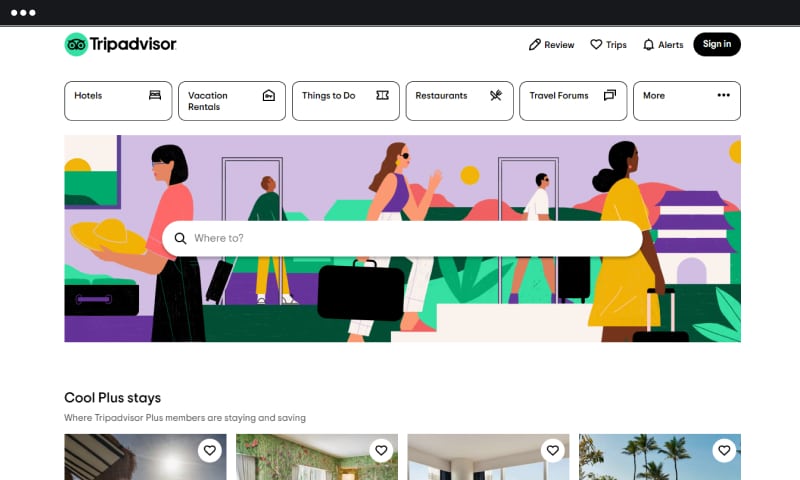
For example, if you’re in the traveling and hospitality industry, you definitely want to be listed on TripAdvisor and Booking.
If you own a restaurant, you’ll want to collect customer feedback on review sites like OpenTable, Zomato, and Eat24.
Explore the most important review sites by an industry that will help you collect feedback from your customers.
2. Ask for reviews
Well, those positive reviews are not going to land themselves. Some of them maybe will, but for the majority, you’ll have to ask.
Before you decide on the most suitable review request channel make sure you follow these tips:
- Make it easy to leave a review
- Minimize the number of clicks for the process
- Make it clear how long it’ll take
Now that you made the process as simple as possible, let’s talk about the review generation channels.
There are many ways to ask a customer for a review. Here are some of the most common ones:
- Ask by email – Sending an email to your happy customers is a great way to increase the star rating. You just need an email base of contacts and customizable review request templates and you’re ready to go.
Just include a review link or a feedback form link in the email, sit back, and wait for your five-star review. - Ask by SMS – Asking for reviews via SMS is an effective way to reach out that won’t seem intrusive because customers are much more receptive when messages arrive in real-time rather than waiting days or weeks for them by email.
- Ask on your website – Having a ‘leave a review corner’ on your website can do wonders. For many users, your website is a starting and finishing point in the buyer’s journey. So make sure to leave a review collection form on your website.
- Ask on printed materials – Your marketing efforts will be boosted a level up and you can collect testimonials from happy customers even by print. QR codes are very convenient to use, so your customer’s experience is enhanced as they submit their testimonial directly on the landing page that has been set up with the code. Why not try it out?
- Ask in person – Face-to-face communication never gets old. Use any chance you have to chat with existing and new customers about their experience with your business. That’s a great way to build trust and ensure yourself some new reviews.
Learn more: How do you ask for more Google reviews?
3. Respond to the reviews
Review monitoring is part of the management process. And this part includes responding to the reviews your customers leave you.
People love it when they feel like their opinion matters. You need to show them that you care by acknowledging the customer feedback and responding to their reviews.
Generally, there are three types of reviews you’ll get: positive, negative, and neutral reviews. Each of them seeks a review response but the approach is different. Let’s see how you can handle these situations.
1. Responding to positive reviews – It’s great when you hear that your customers love their experience with your business. That feeling of gratitude should be reciprocated by thanking the customer for taking a moment to share how they feel about what you do.
You just received an incredible 5-star review and now it’s time to show them some appreciation. Thanking is one way we can build trust, loyalty, and authenticity not only with the reviewer but with potential customers too.
2. Responding to negative reviews – Unhappy customers can be challenging.
A negative review is never a good experience for anyone, but at least it’s an opportunity to make things right. Using bad review response templates and responding with care and concern shows the customer that you care for them, and even if they had a bad time once, you want to ensure this doesn’t happen again in the future. So, don’t neglect your reviews because when customers see their complaints being addressed as soon as possible, it builds trust much more quickly than ignoring or trying to avoid any mention altogether.
3. Responding to neutral reviews – This type can be tricky because while there may not seem to be much praise in them at first glance, these comments often contain elements from the other two categories due to mixed signals. So, when you get this type of not actionable customer feedback, try to focus your response on the positive part and acknowledge the negative one. Try to understand and ask for more details on how you can improve their experience the next time.
To get to the responding phase, you have to monitor reviews. The good news is that there are review management service tools that can make it easier for your review management process.
Learn more: How to reply to a Google review?
4. Amplify the best reviews
Your positive reviews are your biggest asset. You just have to know how to amplify them.
And that’s not as complicated as it sounds. You can use a review management platform and automate the process. Here’s how you can incorporate your reviews into your marketing strategy and use them for marketing campaigns and much more.
1. Display website review widgets
Showcasing your best reviews will influence your reputation a big time. You can embed review widgets on your website in many ways.
- Display the reviews on your ‘About Us’ page
- Put them in a header on your home page
- Create a dedicated reviews and testimonials page
- Display product reviews on the product pages
- Create a carousel of your favorites
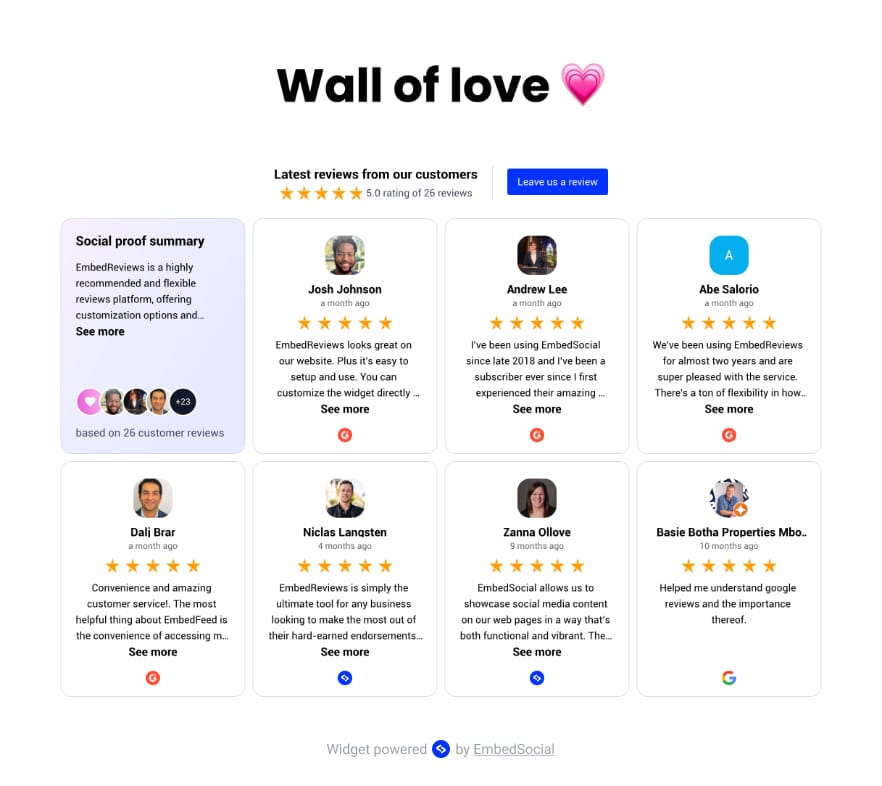
2. Embed a review badge
Go on and display a review badge out of your Google and Facebook reviews on your website. It will make your overall rating stand out and build trust among customers and website visitors. Choose the best review widgets for your website:
3. Use customer testimonials in ads
Social proof is one of the most effective ways to influence potential customers’ decisions. Testimonials are an excellent way for you to show off your satisfied customer base and gain more new ones by using social media ads, like Facebook.
5. Monitor and analyze
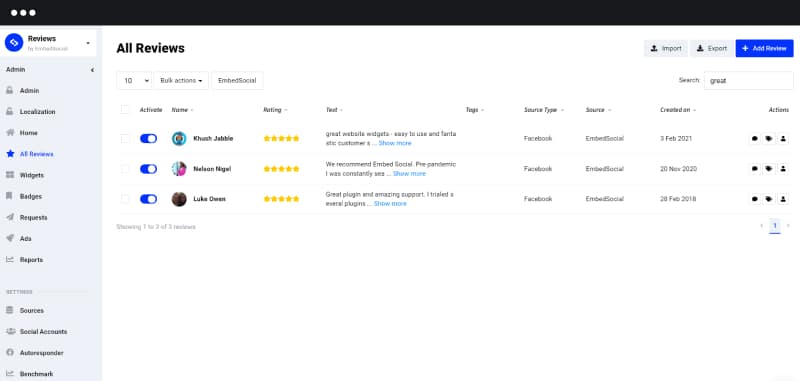
It’s very important to monitor your company’s online reputation. It can be hard for you and the rest of your team to keep up with everything happening when there are so many people talking about it, but here is a list of things that should always catch your eye:
- Your star rating– The most successful businesses have many satisfied customers and good reviews, so don’t settle for anything less than a 4-star rating. Remember that your star rating is the first thing people see when they search online and it often determines if you’ll get more business or not.
- Mentions across the web – You should monitor your brand’s social media reputation. There are many tools online that can provide information about the mentions of you and/or your business, but it is also important to pay attention to context as well. Over time, those insights will help you know how people feel about your brand.
- Your SERP rankings – When it comes to the internet, SEO is a powerful thing. It’s common sense that businesses on top of search engines will receive the most traffic and conversions- which is why your SERP ranking matters so much! Here’s an easy way for you to boost your SEO with reviews. The Schema code helps present aggregate review stars in Google Search results, making them slightly more relevant than other sites without this information.
Now that we went through all the steps, here is your checklist.
Download it and let it help you to keep track of your review management strategy. ?
Learn more: Best online reputation management services
What are the features of our review management software?
Review management software typically offers a range of features designed to streamline and enhance the process of managing online reviews. Key features often include:
Aggregation
Collects reviews from various platforms (like Google, Facebook, Airbnb Reviews, Twitter Reviews etc.) and centralizes them in one dashboard for easier monitoring and management. This saves time and ensures no review is missed
Response Management
Enables users to respond to reviews directly from the software. Some platforms might offer templated responses or automated responses for efficiency, though personalized responses are generally more effective.
Reporting and Analytics
Offers insights into trends, review volume, ratings over time, and more, which can be critical for understanding the impact of reviews on the business and making informed decisions.
Integration with Other Software
Often integrates with CRM (Customer Relationship Management) systems, social media platforms, and other business tools to streamline workflows and connect review management with broader marketing and customer service strategies.
Customizable Dashboards and Filters
Provides customizable interfaces and filtering options to sort, manage, and prioritize reviews based on different criteria like star rating, platform, date, etc.
Best customer review management strategy
An effective online review management strategy is essential for maintaining a positive online presence and building customer trust. Here are key strategies:
Prompt and Personalized Responses
Respond quickly and personally to both positive and negative reviews to show customers that their feedback is valued and that your business is committed to exceptional service. Tailored responses, rather than generic replies, help turn negative experiences positive and reinforce good impressions.
Encourage Reviews from Customers
Actively solicit customer reviews post-purchase or interaction through follow-up emails, website prompts, or at the point of sale. More reviews broaden customer insights and enhance SEO and online visibility, as many platforms favor businesses with more frequent feedback.
Leverage Negative Feedback Constructively
Use negative reviews as an opportunity to acknowledge any issues, offer solutions or compensation where appropriate, and implement changes based on the feedback. This approach can diminish the effects of bad reviews and, by showing your commitment to improvement, can actually boost your credibility and customer loyalty.
Monitor and Manage Reviews Regularly
Consistently track reviews across various platforms to stay informed about customer sentiments and issues. Employing review management tools can aid in monitoring, providing analytics, and timely alerts. This vigilance helps businesses respond swiftly, manage potential problems effectively, and accurately assess overall customer satisfaction, ensuring a customer-focused business approach.
The cost of (no) bad reputation management
It’s no surprise that a company with a bad reputation has trouble attracting new customers, but what is the actual cost of this poor trust?
According to a recent study, 94% say a negative online review has convinced them to avoid a business.
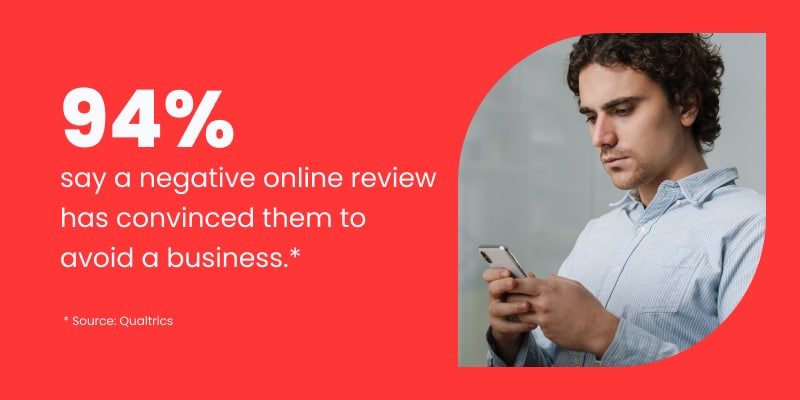
This is especially more emphasize with the Covid crisis, which accelerated the importance of customer experience and boosted online reputation trends that every single company must employ if they want to survive.
Poor reputation attacks most strongly marketing and sales. Therefore the more negative reviews you have, the more sales you'll lose.
Your online reputation is crucial to the success of your company. If you have a bad one, it will impact more than just sales - negative press could lead to an employee retention crisis and increase hiring costs.
Are you ready?
Now that you've come to the end, you've got everything you need to establish a review management strategy and make an outstanding reputation: a review management loop plan to guide you through the process, a checklist to keep track of, and a review management platform to do the heavy lifting for you.
In the end, your brand is only as good as its reputation. You must always be conscious of that for a quality product and service to represent you well.
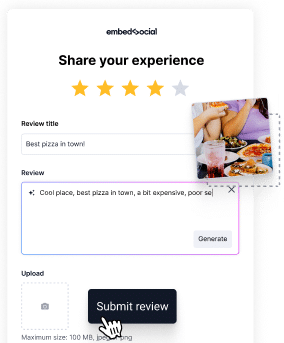
Collect reviews, feedback, and display testimonials widgets at scale!
Use complete reviews management software to generate and display Google reviews widgets on your website.
